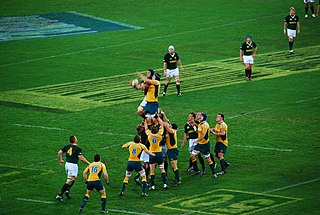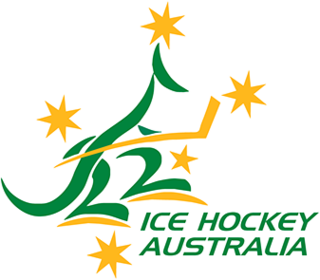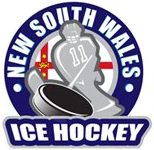
Winter Sports in Australia encompasses a great variety of activities across the continent of Australia, including winter sports played in snow and ice such as ice hockey. Climate varies considerably from the tropical North to temperate South in Australia, and sporting practices vary accordingly. Ice and snow sports like Skiing in Australia are conducted in the high country of the Australian Alps and Tasmanian Wilderness. Australia has relatively low mountain ranges, but a long history of participation in recreational skiing and the Winter Olympic Games. Australians have won olympic gold in ice skating, skiing and snow-boarding events. Australia's generally flat geography and usually mild winter climate otherwise provide ideal conditions for international non-snow/ice winter sports and team games like Rugby Union Football, Rugby league Football and Association Football (Soccer), which are all popular sports during the Australian winter and in which Australia has enjoyed considerable international success. Australian rules football is a home-grown winter football code with a wide following throughout Australia. Many other sports are also played or watched in Australia through the winter season.
The Goodall Cup is a perpetual trophy that is, currently, annually awarded to the playoff champions of the Australian Ice Hockey League (AIHL). The trophy is named after Australian born player John Edwin Goodall who originally donated the cup.

The Australian Ice Hockey Federation, currently trading as Ice Hockey Australia (IHA), is the official national governing body of ice hockey in Australia and is a member of the International Ice Hockey Federation. It was first established in 1908, making it one of the oldest national ice hockey associations in the world.
The Victorian Ice Hockey Association, currently trading as Ice Hockey Victoria is the governing body of ice hockey in Victoria, Australia. The Victorian Ice Hockey Association is a branch of Ice Hockey Australia.

The New South Wales Ice Hockey Association, currently trading as Ice Hockey NSW is the governing body of ice hockey in New South Wales, Australia. The New South Wales Ice Hockey Association is a branch of Ice Hockey Australia.

Ice hockey in Australia is a sport with relatively poor popularity, having low participation and spectator attendance figures when compared with many other sports played in the country.
The history of sport in Australia dates back to the pre-colonial period of the country.

John Edwin Goodall was an Australian ice hockey player, president of the Australian Ice Hockey Association, and founder of the Goodall Cup which he donated to the annual inter-state ice hockey tournament.
The Jim Brown Shield is currently an annually awarded interstate ice hockey championship trophy in Australia for senior men aged 17 years and older with the condition that players of the Australian Ice Hockey League that are 24 years and older must have played less than 6 games to remain eligible. The current trophy is in the form of a shield and is the third trophy to bear the Brown family name. The trophy is named after Scottish born James Archibald Brown. The Jim Brown Shield is competed for in a series of games between state representative teams in what is called the Australian Men's National Ice Hockey Championship.

The St. Moritz Ice Rink was a popular ice rink housed in a grand venue on The Esplanade, St. Kilda, Victoria, which operated between 1939–1981. As one of only two ice rinks in Melbourne in the 40s and 50s, it played a central role to the sport of ice hockey in Australia. Closed in 1982, it soon suffered a major fire and was then demolished, an event later seen as a major blow to the heritage of St Kilda.
The 1909 Inter-State Series was the inaugural inter-state ice hockey championship in Australia.
In ice hockey, the Goodall Cup Final is the championship game to determine the winner of the Goodall Cup, the oldest ice hockey trophy outside of North America and the oldest inside Australia.
The 1910 Inter-State Series Final was the second Inter-State Series ice hockey championship in Australia and for the first time was held in the Sydney Glaciarium.
The 1911 Goodall Cup Final marks the third Inter-State Series ice hockey championship in Australia and the first of these championships won by New South Wales. As the second elected president of the Victorian Amateur Ice Hockey Sports Association, Philip John Rupert Steele Sr. ,presented a cup, gifted by John Edwin Goodall to the Captain of the winning New South Wales Team, Jim Kendall.
The 1912 Goodall Cup Final marks the fourth inter-state ice hockey championship in Australia and the second of these championships won by New South Wales, the first being won in their home arena.
The 1913 Goodall Cup Final marks the fifth inter-state ice hockey championship in Australia and the last championship played before the series was suspended due to World War I.
The 1921 Goodall Cup Final was the first Goodall Cup series after the end of the First World War.
The 1929 Goodall Cup Final was scheduled to begin on Saturday 10 August 1929, New South Wales had retained the Goodall Cup since 1923 at this point and looked to continue their streak.
The 1925 Goodall Cup inter-state series is the first year that the tournament was changed from a 3-game series where Victoria and New South Wales would visit each other's state in alternate years, to a 6-game series consisting of 3 matches to be played in Victoria and another 3 matches to be played in Sydney.
The 1947 Goodall Cup was the 26th year that the Australian inter-state ice hockey 3 game series was played. Victoria won the Cup for the first time in 25 years.









